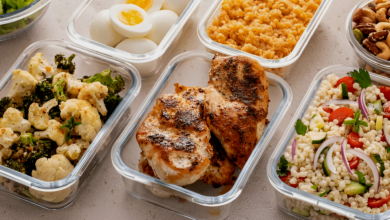What To Do When Dental Emergencies Strike: A Practical Guide For Quick Action
Taking thoughtful steps to prepare for and respond to dental emergencies—through knowledge, prevention, and preparation—can make a dramatic difference.

Key Takeaways
- Swift responses during a dental emergency can prevent permanent damage, ease pain, and save teeth.
- Recognizing common dental emergencies and understanding what steps to take equips everyone for unexpected situations.
- Simple first aid can offer significant relief while professional dental care is sought.
- Adopting preventive oral health habits is effective in reducing the risk of dental injuries or emergencies.
Recognizing a Dental Emergency
Dental emergencies can be frightening and inconvenient, often occurring outside regular office hours. The term “dental emergency” encompasses a range of scenarios, including injuries from accidents, the sudden onset of severe tooth pain, uncontrollable bleeding, or infections that result in swelling or fever. Sometimes, the urgency is apparent, as in the case of a knocked-out tooth or a tooth broken below the gum line. At other times, it can be subtle, such as persistent swelling, localized tenderness, or a sensation that something is not right within the mouth. Being able to recognize and differentiate these situations is crucial. Whenever a dental issue causes significant discomfort, unrelenting pain, excessive bleeding, or impacts daily functioning, treat it as an emergency and seek help as soon as possible. Even during non-traditional hours, access to 24-hour emergency dental care ensures that individuals can reach a professional who can assess and address critical problems promptly.
Mild injuries or minor discomfort may sometimes be safely managed until regular dental hours. However, one should avoid trying to “wait it out” if there is severe swelling, visible trauma, or difficulty swallowing and breathing. Modern emergency dental care providers are equipped to triage cases over the phone, determine immediate needs, and offer advice on stabilizing the situation until in-person treatment is available. Pain, swelling, and bleeding are the three primary indicators of urgency. Acting quickly isn’t just about pain relief—it can mean the difference between saving and losing a tooth or preventing a minor infection from becoming a serious health issue.
Common Types of Dental Emergencies
- Toothaches: A sudden, intense toothache is often a warning sign of deeper problems, such as cavities reaching the nerve, gum infection, or trauma. While cleaning the mouth and flushing away debris is a good first response, unremitting pain should never be ignored. Persistent discomfort or throbbing can indicate an abscess or decay that, if left untreated, may lead to more extensive dental work or even systemic infection.
- Knocked-Out Tooth: Time is of the essence when a tooth is completely knocked out. Holding the tooth only by its crown (the top, not the roots), rinsing it gently, and placing it back in the socket is the ideal scenario. Keeping the tooth moist, either in milk or saliva, and heading immediately to a dental clinic gives the best chance for successful reimplantation.
- Chipped or Broken Tooth: Injuries can happen from biting down on complex objects, falls, or sports accidents. If the break leaves a sharp or jagged edge, using dental wax can temporarily reduce discomfort and prevent cuts inside the mouth. Save any fragments and bring them to the dentist, as these can sometimes be bonded back in place.
- Lost Filling or Crown: Old, worn, or damaged restorations can come loose unexpectedly. Using dental cement from a pharmacy or sugarless gum as a temporary placeholder may protect the tooth until it can be professionally restored. Avoid sticky foods and chewing on the affected side to prevent further damage.
- Abscess: An abscess—a localized infection producing swollen gums and pus—always warrants urgent evaluation. This kind of infection is not only painful but potentially hazardous if it spreads into surrounding tissues. Swelling, fever, and a bad taste in the mouth are warning signs to act swiftly.
First Aid Steps to Take at Home
Immediate first aid during dental emergencies can help alleviate pain and prevent further complications. The first step is to rinse the mouth with warm water to remove loose debris or blood. Assess for bleeding and apply gentle pressure with a sterile gauze or a clean handkerchief for 10 to 15 minutes if needed. For broken teeth or sharp edges exposed in the mouth, dental wax (often found in orthodontic kits) can be a real lifesaver in preventing lacerations on the cheeks or tongue. Avoid placing any painkillers directly against the tissue, as chemicals in medications like aspirin can cause burns to sensitive gum areas.
For knocked-out teeth, it is vital not to remove any tissue fragments attached to the root and to avoid scrubbing the root surface. Prompt re-implantation is best, but if that is not feasible, the lost tooth should be placed in a small container filled with milk or saline solution or even tucked carefully between the cheek and gums. The speed of response—ideally within 30 to 60 minutes—significantly affects the dentist’s ability to save the tooth, and it reduces the risk of requiring more invasive procedures in the future.
When to Seek Urgent Dental Care
Delaying care for severe dental symptoms introduces much greater risks to overall health. Data from the CDC highlights how untreated tooth decay and oral infections contribute to millions of emergency room visits every year. Immediate dental attention is needed for uncontrollable bleeding, intense and persistent pain that does not respond to over-the-counter medication, swelling that extends into the face or neck, trauma to the jaw, or signs of systemic infection such as fever or chills. Ignoring these symptoms increases the risk of losing teeth permanently, spreading disease, or experiencing preventable health complications.
Suppose there are life-threatening symptoms like difficulty breathing or swallowing, rapid facial swelling, or chest pain. Head straight to an emergency room. In that case, these can be indicators of a rapidly spreading infection or a severe allergic reaction.
Preventing Dental Emergencies
A combination of good habits, regular professional care, and the use of proper protective devices can prevent most dental emergencies. Routine dental checkups allow early identification of weak spots, cavities, or weakened restorations before they become urgent. Practicing daily brushing and flossing, using fluoride-containing toothpaste, and seeking professional cleanings can help reduce the risk of sudden issues, such as cavities or gum problems.
For anyone participating in contact sports or high-risk activities, mouthguards are essential. The American Dental Association estimates that athletic mouthguards could prevent over 200,000 oral injuries annually. Additional preventive tips include never using teeth to open packages, avoiding excessively hard or sticky foods, and replacing worn dental appliances before they break down. Taking these simple precautions significantly reduces the likelihood of needing urgent dental care.
Managing Pain and Anxiety
The pain and anxiety that accompany dental trauma can feel unbearable, especially when the cause or severity is uncertain. Over-the-counter medications, such as ibuprofen or acetaminophen, can provide effective, temporary relief when used correctly. Applying cold compresses to the cheek for 10–20 minutes at a time can help reduce pain, swelling, and inflammation. Eating soft, non-irritating foods, avoiding extreme temperatures, and maintaining hydration are simple ways to stay comfortable while waiting for care.
Emotional stress is also every day. Grounding techniques, such as slow, deep breathing, progressive muscle relaxation, or listening to calming music or a favorite podcast, can help shift the focus away from pain and reduce feelings of panic. Connecting with someone—a friend, telehealth provider, or a 24-hour dental care hotline—can help normalize feelings and provide reassurance while a treatment plan is being developed.
Steps to Take if You Can’t Reach a Dentist Right Away
- Gently rinse your mouth with a warm saltwater solution (dissolve half a teaspoon of salt in a cup of warm water) to reduce bacteria and soothe irritated tissue.
- To minimize swelling or pain, apply a cold compress or ice pack to the outside of the cheek near the affected area for 10–20 minutes at a time, keeping intervals between applications.
- If a tooth is knocked out, keep it moist, ideally in a container with milk or using a commercial tooth preservation solution available at most drugstores. Do not let the tooth dry out.
- Eat only soft foods and avoid touching the affected tooth or area with your tongue or fingers to prevent further damage or infection.
- If you experience severe swelling, worsening pain, pus, difficulty swallowing, or fever, head to an urgent care or emergency room immediately, as these may signal a spreading infection.
Building a Dental Emergency Kit
Being prepared can transform a stressful emergency into a manageable situation. A well-equipped dental emergency kit should include:
- Sterile gauze or cotton for bleeding control
- A small, clean container with a lid for holding a knocked-out tooth or fragments
- Over-the-counter dental cement or wax for covering sharp edges or temporarily reattaching lost fillings or crowns
- Cold packs or instant ice packs for managing pain and swelling
- Disposable gloves to maintain hygiene and avoid contamination
- A mini flashlight for improved visibility
- Contact details for your dentist and local emergency dental services
Store this kit at home, in the car, and include it in first aid kits for sports teams or travel bags. Sharing its location with family members or caregivers ensures everyone knows how to respond quickly if the need arises. Taking thoughtful steps to prepare for and respond to dental emergencies—through knowledge, prevention, and preparation—can make a dramatic difference. These measures support not only quick relief but also long-term well-being and confident smiles.











